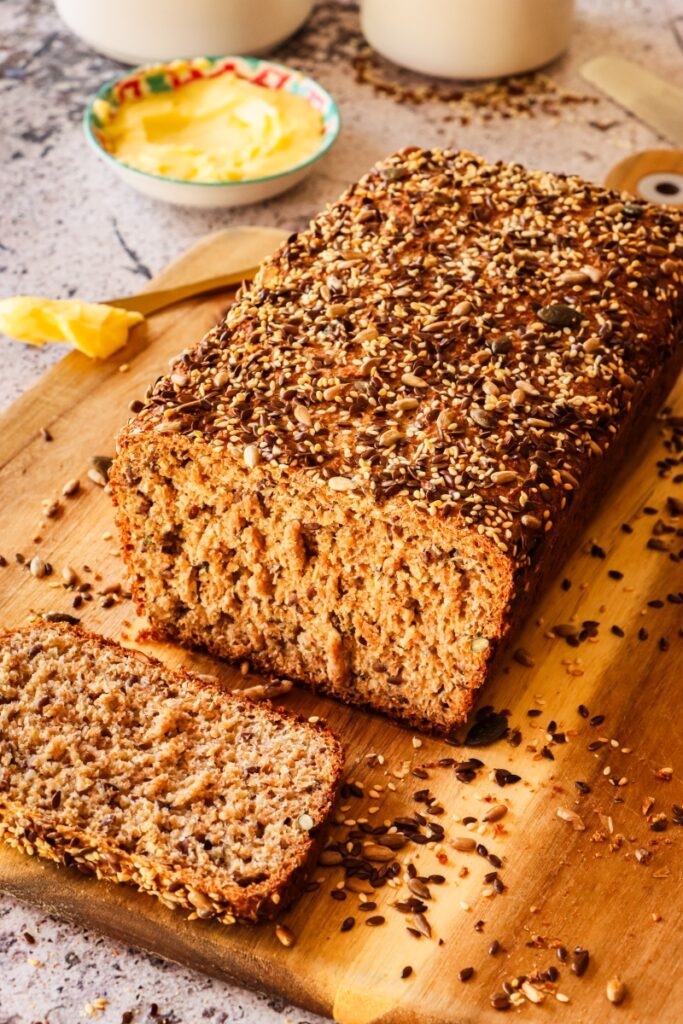Homemade bread has always had an air of comfort, but adding seeds to your loaf elevates it from simple to superfood. Seeded bread is an ideal way to enjoy the warm, satisfying texture of freshly baked bread while integrating a wealth of nutritional benefits. Below, we’ll walk you through a foolproof seeded bread recipe, highlighting its health perks and providing expert tips to get it just right.
Why Seeded Bread?
Seeded bread isn’t just a delicious and hearty choice; it’s a smart one too. Seeds such as flax, sunflower, and sesame are rich in omega-3 fatty acids, fiber, and antioxidants, which contribute to heart health, digestive wellness, and sustained energy levels. The combination of whole wheat and bread flours, when complemented by these seeds, results in a nutritionally dense bread that’s both flavorful and satisfying.
Key Ingredients for Success
The foundation of a good seeded bread starts with a blend of whole wheat and bread flour, which strikes a balance between robust flavor and the lighter texture of a white loaf. Here’s a rundown of the core components that make this recipe stand out:
- Bread Flour & Whole Wheat Flour: A blend to offer both structure and depth of flavor.
- Assorted Seeds: Sunflower, flax, sesame, pumpkin—each bringing unique health benefits and texture.
- Honey or Molasses: Adds a touch of sweetness that pairs perfectly with the nuttiness of the seeds.
- Active Dry Yeast: The catalyst for the dough to rise and develop its airy crumb.
Step-by-Step Guide
1. Prepare the Yeast
Mix warm water (around 110°F) with active dry yeast and a teaspoon of honey. This allows the yeast to activate and ferment, creating a light and fluffy texture in your bread. Let the yeast bloom for about 10 minutes until it becomes frothy.
2. Combine Dry Ingredients
In a large mixing bowl, combine bread flour, whole wheat flour, salt, and a medley of seeds—such as sunflower, flax, and sesame. The seeds not only add nutrition but also contribute a crunch that contrasts beautifully with the soft crumb of the bread.
3. Incorporate Wet Ingredients
Slowly add the yeast mixture, a bit more honey, and some olive oil into the dry ingredients. Stir until the dough starts to form. Expect the dough to be slightly sticky, which is key for achieving the right hydration level.
4. Knead or Stretch-and-Fold
If you prefer the traditional method, knead the dough for 8–10 minutes on a floured surface until smooth and elastic. Alternatively, the stretch-and-fold technique can be used for a more artisanal approach, creating beautiful structure without overworking the dough. Perform this technique every 15 minutes over the span of an hour.
5. First Rise
Once kneaded or folded, place the dough in a lightly greased bowl, cover it, and let it rise for 1–2 hours, or until it has doubled in size. The first rise is critical for developing the bread’s airy texture and flavor complexity.
6. Shape the Loaf
After the dough has risen, gently punch it down and shape it into a loaf. For a crunchy crust, sprinkle additional seeds on top of the loaf before its final rise.
7. Final Rise and Bake
Allow the shaped loaf to rest for another hour. Preheat your oven to 350°F (180°C) and bake for 30–40 minutes. The bread should develop a golden-brown crust, and when tapped on the bottom, it should sound hollow.
Expert Insights
- Hydration is Key: Seeded bread dough tends to be wetter due to the addition of seeds and whole grains. Embrace this stickiness rather than adding more flour, as it will lead to a tender crumb.
- Seed Soaking: If you want an even softer bread, soak the seeds for an hour before mixing them into the dough. This step enhances moisture retention and softens the seeds.
Versatile and Nutritious
Seeded bread offers versatility and nourishment in every slice. Whether paired with a spread of fresh avocado, used for sandwiches, or served alongside a bowl of hearty soup, this bread provides a perfect balance of taste and health.
The beauty of seeded bread lies in its combination of textures—the crunch of the seeds with the soft, chewy crumb of the bread makes each bite satisfying. For those seeking to improve their bread-baking skills, mastering this recipe is a rewarding journey.
With just a few essential ingredients, time, and technique, you can transform your kitchen into a bakery, producing loaves of seeded bread that are as good for your body as they are for your soul.






